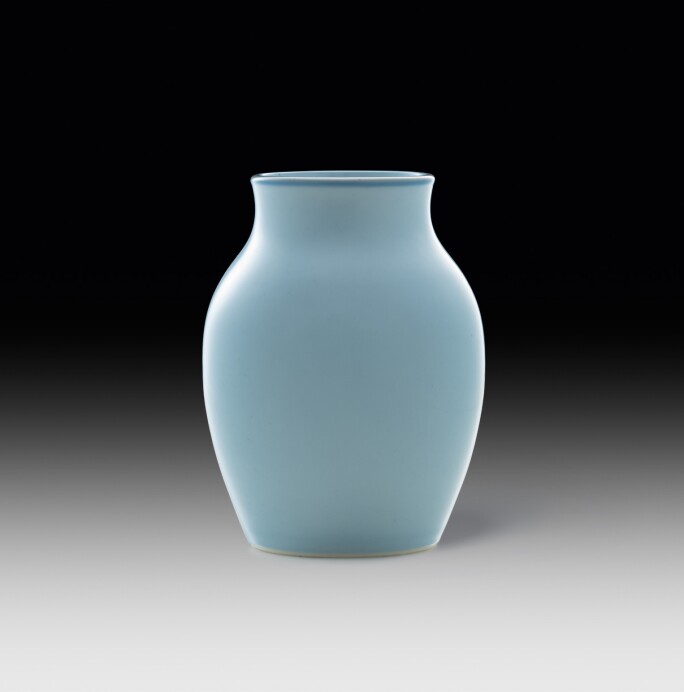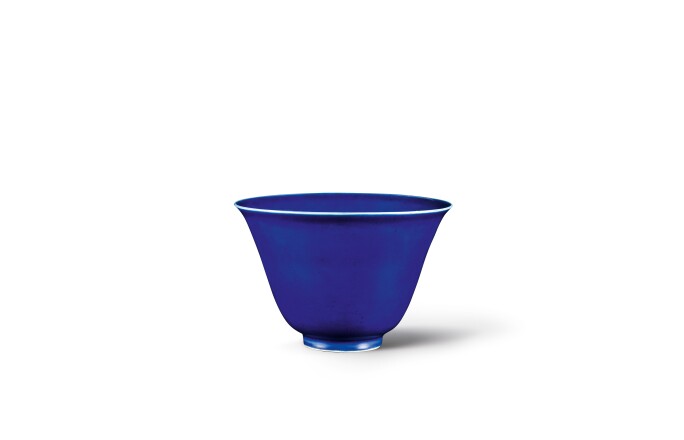A s a young man in Hong Kong in the 1970s, Richard WC Kan remembers dreaming “of doing something worthwhile in my lifetime”. A descendant of the founders of the Nanyang Brothers Tobacco Company, one of the most distinguished businesses in pre-Revolutionary China, Kan was schooled in Hong Kong and England, then launched a career in engineering and development. But although he would become a success in land development, his true passion lay with Chinese monochrome porcelains, an area of collecting requiring tremendous knowledge and connoisseurship.

At 29, he bought his first piece (from Sotheby’s, as it happens), a 17th-century Yixing teapot. As Kan’s career took flight, his acquisitions picked up. The 1990s, he says, “was a very fruitful period, both for my business and collecting”. Once he had the means, he could follow a simple mantra: “Buy only the best.” At auction, he acquired key pieces from legendary collections, including those of Edward T Chow and TY Chao. In 1995, Kan was inducted into Hong Kong’s illustrious Min Chiu Society, whose elite membership is comprised of scholarly collectors who are also part of the city’s social hierarchy.

Mark and period of Kangxi 13cm high
This elegant bottle is characterised by a sumptuous rounded body with elegant curved shoulders. It is applied with a sublime and delicate lavender-blue glaze. Dating from the Kangxi period (1662–1722), it encapsulates the purity of form of early Qing dynasty monochromes. —Julian King
Kan assiduously cultivated relationships with leading experts throughout the world and is a dedicated autodidact. “It takes a lot to build a great collection,” Kan observes. “First, a fervent interest. Then perseverance coupled with deep learning.”

Seal mark and period of Qianlong 36cm high
This sumptuous vase is exquisitely potted in the form of an auspicious double-gourd, emblematic of Daoism, and is applied with a delicate pale green glaze. It is extremely rare to find a double-gourd vase of this quality in such pristine condition, preserved with its original cover. —JK
While porcelains are his greatest holdings, Kan has also assembled enviable collections of Greek antiquities and coins, exhibiting the latter at the Hong Kong Museum of History in 2004, with the catalogue remaining an important reference work within the field. He also has a number of important watches, not to mention some 150 classic Leica cameras.
Kan dubbed his collection Zhuyuetang, meaning ‘Hall of Bamboo and Moon’
In time, Kan dubbed his collection Zhuyuetang, meaning “Hall of Bamboo and Moon” (the name is loosely inspired by the composition of the Chinese character for his own surname). “Most Asian art collectors,” he says, “keep their objects in boxes.” Kan, however, likes to display and handle them, and he is quick to show visitors rarities and explain their histories and significance.

Mark and period of Jiajing 11.9cm high
Dating to the Jiajing (1522–1566) period of the Ming dynasty, this truly exceptional bell-shaped cup is a sublime creation, perfect in form and applied with the richest of cobalt-blue glazes. Originally in the collection of Paul and Helen Bernat, it was later acquired by Professor E T “Teddy” Hall, the renowned scientist famous for carbon-dating the Turin shroud. When it was acquired from his collection at Sotheby’s Hong Kong in 2000, it fetched an unprecedented price for a monochrome of this period. The term “sacrificial-blue” is used for porcelains of this pure blue colour created for the Altar of Heaven in Beijing. —JK
This September, the public will have a rare opportunity to see a cross-section of ceramics from the collection when it goes on view at Geneva’s Fondation Baur. There it will be shown alongside the museum’s own storied holdings, for a once-in-a-generation exhibition documenting some 1,000 years of Chinese monochrome porcelain, capturing many of its sublime and subtle variations.

Seal mark and period of Qianlong 27cm diameter
This extremely rare vessel, created in the Qianlong period (1736–95), was used as a brushwasher for a scholar practising calligraphy. It is glazed in the purest hues of turquoise, suffused with a pale greenish tone. The exterior is intricately carved with a design of stylised lotus flowers, symbolic of purity in the Buddhist tradition, and the interior with the Eight Trigrams of Daoism surrounding a yinyang symbol. —JK
But Kan is careful to point out that the selection could not possibly represent all the categories of Chinese monochrome – that would be an impossibility within a field this vast. His hope is that the exhibition, and, more importantly, the scholarly catalogue that accompanies it, will allow him to “achieve my goal of dong something worthwhile in my brief span of life”.
Anthony Calnek is Editor in Chief of Sotheby’s magazine
Mille ans de Monochromes is on view at Fondation Baur, Geneva, 27 September–3 February 2019


